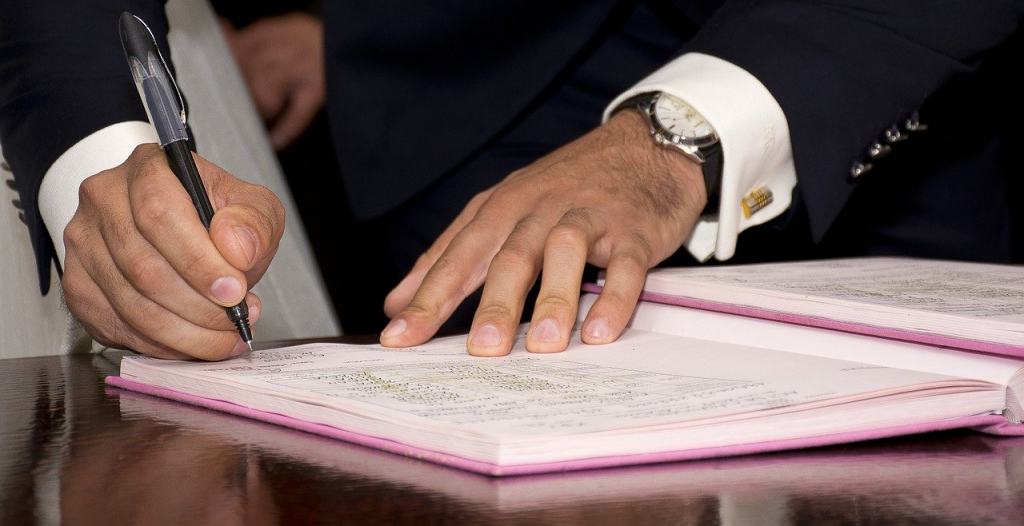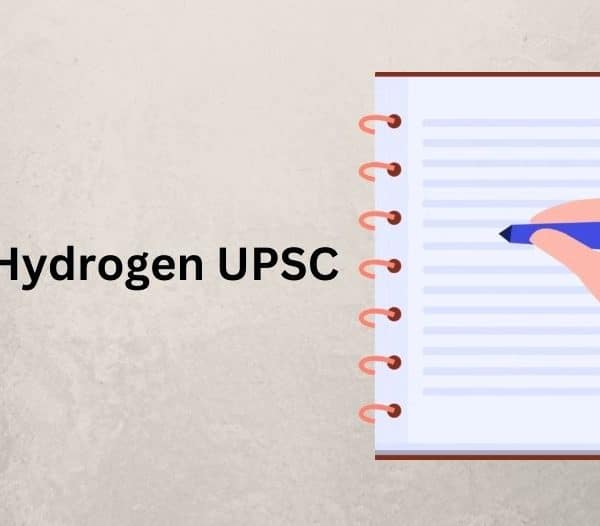India is a diverse country of various religions and the predominant religion, Hinduism is divided into castes where the upper castes have created a strong social hierarchy to oppress and benefit out of the lower castes. Keeping in mind the social injustices suffered by the lower castes, in 1979, the Mandal Commission, headed by Bindeshwari Prasad Mandal, was the Second Backward Class Commission formed to identify the “socially or educationally backward classes of India”. This commission proposed to give 27% reservation to OBC (Other Backward Classes), which resulted in 49% of jobs for them in public universities and public services.
Here in this article, you are going to understand what is the creamy layer? What is a non-creamy layer? and the difference between a creamy and non-creamy layer of OBC. Also, let’s get the knowledge about the civil service exam preparation. This article will let you do the civil service exam preparation and it has all the information for the IAS preparation for beginners.
What is the Creamy Layer?
Creamy layer is a term used in Indian politics to refer to the relatively forward and better-educated members of the Other Backward Classes (OBCs), who are not eligible for government-sponsored educational and professional benefit programs. The term was introduced by the Sattanathan Commission in 1971, which directed that the “creamy layer” should be excluded from the reservations (quotas) of civil posts.
Creamy Layer Income Limit
The creamy layer (income) criteria were defined as annual family income from all sources more than 100,000 rupees (₹ or INR defined by Santhanam committee in 1971, together abbreviated Rs 2.5 lakh) per annum in 1993, and revised to ₹ 4.5 lakh (2004), Rs 6 lakh (2013) and Rs 8 lakh (2017).
In October 2015, the National Commission for Backward Classes (NCBC) proposed that a person belonging to OBC with an annual family income of up to Rs 15 lakh should be considered as the minimum ceiling for OBC. The NCBC also recommended the sub-division of OBCs into ‘backwards’, ‘more backwards’, and ‘extremely backward’ blocs and divide 27% quota amongst them in proportion to their population, to ensure that stronger OBCs don’t corner the quota benefits.
Non-Creamy Layer Certificate
Non-Creamy Layer Certificate is also known as Other Backward Class Certificate, was introduced by former Prime Minister V.P.Singh in 1993. With the implementation of this certificate, a lot of jobs were allocated in Central Government and Public Sectors for persons holding the certificate.
Students holding Non-Creamy Layer Certificate also enjoy certain allocation in top educational institutions like IIT and IIM. Non-Creamy Layer Certificate is issued by the Tahsildar of the concerned State Government. Hence, the procedure for obtaining the Non-Creamy Layer Certificate differs from State to State.
Full-Form of OBC
Full form of OBC is Other Backward class. It is a term that is used collectively by the government of India to identify or to classify castes that are educationally or socially deprived or disadvantaged. Other Backward class is an official classification done by the GOI.
Other classifications consist of Scheduled Castes (SC) and scheduled tribes (ST). Schedule class and Schedule tribes too avail the advantages presented to them by the government. Other Backward Class Category is divided into two categories namely creamy layer OBC and non-creamy layer OBC by the government of India.
Also read: Insights into the Reservation System in India
OBC Creamy Layer
Other Backward class creamy layer is a category of OBC; people belonging under this are financially better off or wealthier. They are way better than the other people belonging to the OBC category.
The creamy layer among the OBC are better educated and the GOI has defined the Creamy Layer among OBCs as those earning more than Rs.8lakhs per annum. OBC creamy layer does not get any benefit anymore. They are treated the same way the general category is treated.
Also read: How Does the OBC Creamy Certification Work? Click Here to Know it All
What is a Non Creamy Layer?
If a total family income is less than 8 lakh per annum, the family is considered to fall in non-creamy OBC category. Such families are entitled to a certificate of OBC non-creamy layer. Any person belonging to the non-creamy OBC category will be enjoying all the benefits and will be getting the relaxation of age in competitive exams as well.
If anyone falls under the non-creamy OBC category, they will be getting reservations while applying for government jobs or government posts. However, to avail all these benefits, they will have to obtain a certificate that is called an OBC certificate. The certificate is valid in every state of India except for Tamil Nadu. The validity of the certificate is for one year, and it starts from the very day of receiving it.
Also read: What is a Non-Creamy Layer in OBC? How to Get the NCL Certificate?
OBC Non-creamy Layer Certificate Eligibility
Non-creamy layers have a certain eligibility criteria to ensure that the right and deserving candidate gets the certificate. Here are some points that are considered while categorizing people as an OBC non-creamy layer.
Income Limit
Income of Person and Family combined
A person can apply for an OBC certificate only if the annual income of the family is less than rupees eight lakhs per annum. If it were more than the given figure, they would not be getting the non-creamy category certificate. (Income from agriculture/ farming is not included in this).
Parents Employed under Central Government
If a person’s parents, is a part of central government or is working under Group C and Group D category under the central government, the person is eligible to apply for the non-creamy OBC certificate.
Employee under Central Government
If a person himself or herself is a part of central government or is working under central government’s group B category, then that very person is eligible to apply for an OBC non creamy layer certificate. It is to be noted that it is valid only if the person’s parents do not receive any income like that of pensions.
Husband Employed under Central Government
If a woman’s husband is employed under the Central Government, then that woman would be eligible to apply for the certificate provided that her parents do not receive any kind of income.
Also Read : UPSC Study Time Table: The Ultimate UPSC Preparation Schedule to Crack the Exam
Difference between a Creamy and Non-Creamy Layer of OBC
| OBC-CL – OBC creamy layer | OBC-NCL – OBC non-creamy layer |
| Income: Above 8 Lakh | Income: Below 8 Lakh |
| Family Income: Above 8 lakh when added together
(Income from farming not to be included) |
Family Income: Below 8 lakh When total of all family member income
(Income from any farming sources are not included) |
| Treated as equivalent to the general category hence get few or no benefit in government schemes and examinations. | Get Benefit in government released scheme and competitive examination. |
Citizens those are not Eligible to Apply for OBC Certificate
- Certain castes that come under BC and MBC.
- Parents employed under Group A services like IPS, IAS, and IFS.
- Parents working under Group B and C of the Central Government and,
- Parents working under Group 1 of the State Government.
- Parents’ income exceeds 8 lakhs, they are not eligible to apply for this certificate.
How to Apply for OBC Certificate
The application for the OBC certificate can be done by both online and offline methods provided, the person is eligible for the application.
Offline Method to get OBC Certificate
For getting the caste certificate or the OBC certificate through offline mode, you have to visit your nearby tehsil office, SDM office, Revenue office or SETU/ CSC centers.
Also Read : Interview with Shubham Gupta: UPSC Preparation Journey of the 6th All India Rank Holder
Step by Step Method
- You will be getting an application form for a caste certificate which he or she has to fill with correct details like contact information, address and other personal details.
- In the section of caste detail, you have to fill the caste details of your father. If the father is no more, then you will need any other blood relative’s caste certificate or documents.
- According to the caste certificate that you get, you have to tick the caste option that you are applying for.
- If you have changed the state or has migrated from one state to another, then it must be specified in the form as well.
- A self-declaration part has to be signed and filled.
- Lastly, you have to paste a passport size photograph and submit the local address and reference for the further verification of the process.
- After that you have to submit the original application form with self-attested documents in the office.
- You have to wait for 30 to 35 days for the caste certificate to get.
Online Method to Apply for OBC Certificate
Only a few states offer the online mode of registration.
If you belong to that state where online mode is available, you can visit the state’s backward class welfare portal.
Step by Step Method
- Click on the link which shows “apply for caste certificate online”.
- Either create an account in the portal itself or can start filling the online application form provided within the site.
- Fill your details such as contact details, address, personal details and other required details.
- The verification of the details you have provided so far has to be done by you.
- After checking the details, you can submit the data with the proof of documents as well.
- After submitting, you will be getting a slip of acknowledgement in addition to the application number.
- You could print out the slip if he or she wants or can save it offline. You need to save the application number so as to keep a check on application status.
- After having the verification done, you can directly download your caste certificate from the link or the portal itself.
- An email or SMS will be generated on the completion of the process.
Documents Required
You are required to attach these certificates and document while applying for the OBC certificate
- Community certificate.
- School Leaving Certificate.
- Ration Card.
- Income Certificate.
Conclusion
Hopefully, this article will help you understand creamy layer meaning along with other important things related to it, making you all ready for the upcoming UPSC exam. So, how are you preparing yourself for the upcoming exam? Comment in the below box to share your thoughts with us. You can visit the UPSC Pathshala website for IAS preparation for beginners. It is the most reliable civil service exam preparation platform.
Also Read : What Subject is Best for IPS? How to Become an IPS Officer? Click here to Know it All







Just browsing your blog, how long have you had it? I love the design.
Prawdziwy z Ciebie talent i mistrz pióra z ogromną łatwością przekładasz myśli na słowa… trzymaj tak dalej, dbaj i pięlęgnuj swego bloga… Czym się inspirujesz na codzień ? skad czerpiesz pomysły na wpisy ?